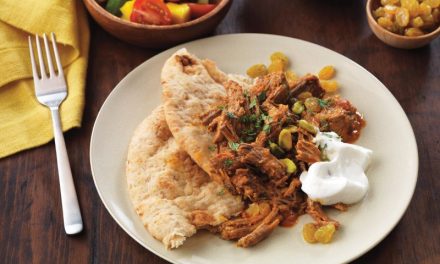Now modern technology has made salt readily available and at a price almost anyone can afford. As a result, many of us take salt and its merits for granted. But scientists keep salt in the news by debating its role in a healthful diet. At times, discussion and controversy threaten to obscure salt's importance and to confuse thoughtful consumers.
To begin with, the terms "salt" and "sodium" are often used interchangeably. Since sodium has been linked to health problems and sodium is most commonly eaten as salt, measuring salt intake has been an easy way to determine how much sodium people actually consume, explains Food and Drug Administration's Ellen Anderson, Ph.D., physical chemist in the Office of Food Labeling. But recent data suggest that sodium in other forms--such as in sodium bicarbonate (baking soda)--causes no health problem, so that salt itself--as sodium and chloride--could after all be what is so undesirable in large amounts.
At odds, too, are the scientists who do not agree on salt's impact on blood pressure: Does it contribute to high blood pressure? Should salt intake be restricted?
In the spring of 1995, a report on the results of a four-year observational study in a population with high blood pressure suggested that a link exists between a low-salt diet and a higher risk of heart attack. The study, conducted by Michael Alderman, M.D., professor and chairman of the Department of Epidemiology and Social Medicine at the Albert Einstein College of Medicine of Yeshiva University in New York, was published in Hypertension, a journal of the American Heart Association.
While some noted his findings with interest, other experts challenged the study: Only a single urine sample was used to determine usual dietary salt consumption, similar results were not seen in women, and, most importantly, many important risk factors for heart attacks were not well measured and could have accounted for the higher risk factors.
But an even greater furor occurred a year later, when two well-respected medical journals tackled the subject of salt and blood pressure. The British Medical Journal dedicated part of its May 18, 1996, issue to the topic, publishing both sides of the debate, as editorials, papers, articles, and commentaries. One article, authored by Richard Hanneman, president of the Salt Institute in Alexandria, Va., challenged evidence of a correlation between salt intake and elevated blood pressure found in two studies by the Intersalt Cooperative Research Group, an international team of investigators who collected and analyzed data on salt and high blood pressure and released their findings in 1988.
Almost immediately afterwards, the Journal of the American Medical Association (JAMA) published a meta-analysis (a study in which the results of available clinical studies are pooled, then analyzed) in its May 22-29 issue that suggested restricting dietary sodium intake had only a minimal effect on blood pressure. However, the authors concluded that for younger people with normal blood pressure, a diet high in salt is harmless. JAMA's press release failed to note that an accompanying editorial by Claude Lenfant, M.D., director of the National Institutes of Health's National Heart, Lung, and Blood Institute, took issue with the study's methods and conclusions.
The New York Times immediately picked up the story and, in the early-June food section article "Salt is Regaining Favor and Savor," added that many chefs are using a variety of designer salts--fancy sea salt among them--in their upscale cooking.
Almost unanimously, scientists and authorities called the JAMA study flawed, saying among other things, that the study was too limited; it included a subgroup of people who had normal blood pressure and were not fed consistent hospital-controlled diets, and it included trials that lasted too short a time.
Need for Salt The one fact no one challenges is that the human body needs salt to function. Sodium is the main component of the body's extracellular fluids and it helps carry nutrients into the cells. Sodium also helps regulate other body functions, such as blood pressure and fluid volume, and sodium works on the lining of blood vessels to keep the pressure balance normal."You cannot exist without sodium," says Alicia Moag-Stahlberg, a research nutritionist at Northwestern University Medical School in Chicago and a spokeswoman for the American Dietetic Association. "But the amount we need is minor."
The National Research Council of the National Academy of Sciences in Washington, D.C., has determined that the recommended safe minimum daily amount is about 500 milligrams of sodium with an upper limit of 2,400 milligrams. However, the council has said that lowering sodium intake to 1,800 milligrams would probably be healthier.
Many Americans are consuming even higher amounts of salt, up to 6,000 milligrams a day, points out Moag-Stahlberg, with possible harmful effects. "Many people argue that a healthy kidney can get rid of it [the excess], but in many cases, that happens at the expense of losing calcium," she says. It's possible that the habitual high intake of salt produces physiological changes in the kidney, which increases the risk of high blood pressure. For women, as some studies now suggest, this habitual lack of calcium may eventually be linked to the bone disease of old age, osteoporosis, in which long-term calcium loss causes bones to weaken and break easily.
Our ancestors, often living in salt-poor environments, were not faced with these modern-day health problems. Jeremiah Stamler, M.D., professor emeritus of Preventive Medicine, Northwestern University Medical School, Chicago, says that humans are adapted to low-salt intake "with the kidneys and the gastrointestinal tract functioning efficiently for preserving sodium. So how come we started adding salt to our food?"
About 6,000 to 8,000 years ago, our ancestors went from gathering food and hunting to cultivating crops and raising animals. To survive, they needed to preserve and to stockpile foods for the long winter months. "You can dry vegetables and dry meats," Stamler says. "But the other way to preserve food is to salt it." However, adding salt to food did more than cut bacterial growth. It added a whole new dimension to the pleasures of eating: Salt adds flavor and heightens existing flavors, even in sweets, and salt helps process basic raw ingredients into other food products. Of these, cheese is perhaps one of the most familiar examples, since salt is necessary in its formation.
For Americans today, eating preserved and processed foods has become a way of life. According to Regina Hildwine, technical regulatory affairs, the National Food Processors Association, Washington, D.C., it is almost impossible to prepare a meal without using some processed food. Besides, not only is salt one of the four taste categories--salty, sweet, sour, and bitter--salt offers certain technical advantages in the kitchen. Two examples: It reduces the boiling point of water, which helps heat penetrate into cooking foods, and it helps condition dough in baked products. And, adds Richard Hanneman, the biggest advantage of using salt is that it enhances other flavors.
But some scientists are concerned about the amount of salt in processed foods. "Seventy-five percent of the sodium consumed is in processed foods," says Anderson. "What the food industry includes during processing, we can't take out."
Stamler agrees. "If we reduce our salt intake [at the table]," he says, "that won't solve the problem. There's salt in bread, processed meat, cheese, canned vegetables--these are all hidden sources of salt." Fortunately, FDA's food labeling helps consumers monitor their sodium intake in processed foods. But, says Anderson, in restaurant foods, and that includes fast-food chains and Chinese restaurants, the "sodium levels can be very high."
New regulations that went into effect in May 1997 offer consumers some help with restaurant fare. The regulations apply the Nutrition Labeling and Education Act (NLEA) of 1990 to restaurant menu items that carry a claim about the food's nutritional content or health benefits.
Scientists Look at Salt"And since then," says Cutler, "scientists have refined that conclusion and there is scientific support for it. We have learned to measure blood pressure better than measuring the pulse and to quantify salt intake, and we have learned all the scientific experimental designs to study salt intake. The conclusion is still there. The higher the salt intake, the higher the prevalence of hypertension." Higher-than-normal blood pressure may lead to heart attacks, kidney disease, and strokes.
Cutler estimates that persistent high blood pressure--conventionally defined as readings of 140/90 or above--is one of the most common health conditions, affecting nearly 50 million Americans. People at greatest risk for high blood pressure are those with a family history, the elderly, middle-aged men, and middle-aged Black women.
Yet everyone is vulnerable, says Stamler, because blood pressure normally rises with age, a fact corroborated by numerous studies, and high-salt intake contributes to that rise. "The fundamental conclusion is that salt relates to high blood pressure independent of other factors affecting blood pressure, like alcohol and obesity," he says. "There is such a massive body of evidence," he adds, including the 1988 Surgeon General's report on nutrition, the National Academy of Sciences' report on diet and health, and the Intersalt research group.
We don't know exactly how salt works to elevate blood pressure, says Anderson. But the best guess is that too much salt causes the sodium channels (structures that move sodium into and out of cells) to work too hard and gradually the channels begin to fail. This process is irreversible, so that by old age, even if people cut back on salt, their kidneys can no longer flush extra amounts of salt from the body without an increase in blood pressure.
Salt may also be linked to other health problems. "One of the aspects of salt that has been neglected," says Stamler, "is the growing evidence that high-salt intake is bad news for other problems ... such as aggravating asthma, gastric cancer, kidney stones, osteoporosis ... a wide range of problems."
Regulating Salt Intake FDA is not advising people on how high or low their salt intake should be, says Ida Yoder, a chemist with FDA's over-the-counter drug products division. "By appropriate labeling, we are attempting to inform the public and those who want to keep their sodium intake down as to the amount of sodium they are consuming. The sodium labeling regulations for both foods and over-the-counter drugs require sodium content labeling for those products that contain a certain amount of sodium."Following a salt-restricted diet will, for many people, be what the doctor orders. And while many people say they crave salt and use it liberally in their food, restricting salt intake is only really a matter of making some adjustments, says Anderson. "If people make a concerted effort to reduce salt intake," she says, "initially they notice that things don't taste salty enough. But if they go through a transition period and then go back to foods they used to like, they find them too salty."
In the end, wise consumers will choose diets of moderation in all things. The Dietary Guidelines, developed jointly by the U.S. Department of Health and Human Services and Department of Agriculture, stresses just that when discussing daily needs for salt, pointing out that eating less salt is not harmful and can be recommended for the healthy normal adult.
FDA / FDA Consumer







